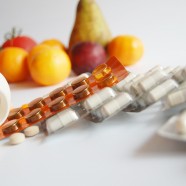
Abundant clinical evidence confirms the powerful and stellar treatment of natural medicine, vitamin C and hydrogen peroxide to wipe out super bugs and stave off infectious illnesses. Even if you have contracted a viral infection, flu or pneumonia; symptoms and duration can be significantly reduced with any of the before mentioned recommendations.
Antibiotics are a food source of super bugs thereby ineffective, plus they wipe out a large part of our immune system with every round of treatment. It has been several years now that the World Health Organization (WHO) announced that the era of antibiotics is over! Our bodies are less and less able to fight off bacterial and viral infections from lifelong antibiotic usage producing compromised immunity. At the very least, probiotics must be taken on a regular basis to help repopulate our beneficial bacteria which accounts for 85% of our immune system made up of 200 species and 7000 strains.
There are alternative solutions that can protect individuals and families even when traveling. It is at these times that we are all more vulnerable to pathogens that our immune system has not previously come in contact with – and add to that a system that is ill equipped to deal with such an onslaught of foreign bacteria.
What to do!
On the lighter side yet extremely effective as both a preventive and treatment is high dosages of vitamin C, either taken often orally or intravenously when extremely ill. Extensive research exists to confirm vitamin C’s antiviral effect. For decades, Frederick R. Klenner, MD, and Robert F. Cathcart, MD, successfully used this approach. In the treatment of influenza, for most individuals, frequent oral dosing with vitamin C (within daily bowel tolerance) would work for most people. For those who are seriously ill, intravenous vitamin C would be indicated. Vitamin C can be coupled with any other holistic antiviral and antibacterial protocol, including natural medicine – which will be detailed further into this piece.
Frederick R. Klenner, MD, who is a chest specialist states, “Some physicians would stand by and see their patients die rather than use ascorbic acid. Vitamin C should be given to the patient while the doctors ponder the diagnosis.”
Suggested Dosage Protocols
Orthomolecular Medicine News Service, Jan 30, 2020 reported on Dr. Robert Cathcart vitamin C treatment protocols for employing vitamin C in the treatment of coronavirus, influenza and pneumonia.
Dr. Cathcart suggests:
“The sicker a person was, the more ascorbic acid they would tolerate orally without it causing diarrhea. In a person with an otherwise normal GI tract when they were well, would tolerate 5 to 15 grams of ascorbic acid orally in divided doses without diarrhea. With a mild cold 30 to 60 grams; with a bad cold, 100 grams; with a flu, 150 grams; and with mononucleosis, viral pneumonia, etc. 200 grams or more of ascorbic acid would be tolerated orally without diarrhea. The process of finding what dose will cause diarrhea and will eliminate the acute symptoms, I call titrating to bowel tolerance.”
“The ascorbate effect is a threshold effect. Symptoms are usually neutralized when a dose of about 90% or more of bowel tolerance is reached with oral ascorbic acid. Intravenous sodium ascorbate is about 2½ times more powerful than ascorbic acid by mouth and since for all practical purposes huge doses of sodium ascorbate are non-toxic, whatever dose necessary to eliminate free radical driven symptoms should be given.”
In light of vitamin C having been proven to be extremely effective against all other viruses, it would then stand to reason that coronavirus would be just as susceptible to its effects. Important to note: there has not been any documented event where vitamin C has ‘not successfully’ neutralized and destroyed all viruses which it has been tested against using adequate dosing with vitamin C. 1,2
“Even the common cold is a coronavirus.”
About Nebulized Hydrogen Peroxide
Thomas E. Levy, MD: “Viral syndromes start or are strongly supported by ongoing viral replication in the naso- and oropharynx. When appropriate agents are nebulized (into a fine spray) and this viral presence is quickly eliminated, the rest of the body “mops up” quite nicely the rest of the viral presence. The worst viral infections are continually fed and sustained by the viral growth in the pharynx. Probably the best and most accessible agent to nebulize would be 3% hydrogen peroxide for 15 to 30 minutes several times daily.” 3
“Chikungunya is a viral illness characterized by severe joint pains, which may persist for months to years. There is no effective treatment for this disease. We treated 56 patients with moderate to severe persistent pains with a single infusion of ascorbic acid ranging from 25-50 grams and hydrogen peroxide (3 cc of a 3% solution) from July to October 2014. Patients were asked about their pain using the Verbal Numerical Rating Scale-11 immediately before and after treatment. The mean Pain Score before and after treatment was 8 and 2 respectively (60%) (p < 0.001); and 5 patients (9%) had a Pain Score of 0. The use of intravenous ascorbic acid and hydrogen peroxide resulted in a statistically significant reduction of pain in patients with moderate to severe pain from the Chikungunya virus immediately after treatment.” 4
Other Nutritional Treatment of Coronovirus
Beyond question, our immune system requires a variety of micronutrients to perform effectively and reduce our risk to infection. Some of the strongest evidence for immune support include zinc, and vitamins D and C. 5
Magnesium
The mineral magnesium is our most influential element in our body and works with zinc on about one third of its tasks. It is difficult to obtain enough magnesium through our diet due to modern day agriculture practices. And more often blood tests do not show an accurate diagnosis of magnesium deficiency.
Inexpensive and yet extremely effective for acute viral and other infections, is oral magnesium chloride. Interestingly, Andrew W. Saul, OMNS, reports “Amazingly, just as intravenous vitamin C has been shown to cure polio, an oral magnesium chloride regimen has been shown to do the same thing, as or even more effectively than the vitamin C.” 6, 7,8
Suggested dosage: “Mix 25 grams MgCl2 in a quart of water. Depending on body size (tiny infant to an adult), give 15 to 125 ml of this solution four times daily. If the taste is too salty/bitter, a favorite juice can be added.”
Other Essentials Proven to Fight Coronviruses
Vitamin D3
Vitamin D3 plays key roles in our memory, moods and has demonstrated its protective guard against infections. Lets view interesting findings by William Grant, PhD, “Coronaviruses cause pneumonia as does influenza. A study of the case-fatality rate from the 1918-1919 influenza pandemic in the United States showed that most deaths were due to pneumonia. The SARS-coronavirus and the current China coronavirus were both most common in winter, when vitamin D status is lowest.” 10,11,12,13,14
Another specialist supports vitamin D. Dr. Jeffrey Allyn Ruterbusch says, “I have found the value of bolstering immune function with vitamin D to be incredibly powerful.”
Zinc
Zinc boasts numerous accolades like magnesium in their many metabolic and biochemical functions in our bodies. Zinc is well known as an immune booster and as a powerful antioxidant promoting quicker healing and warding off infections. Adults: take 30 mg of zinc picolinate or 25 mg twice a day when sick. 15,16
Selenium is proven to fight coroviruses
Selenium is not as widely known for its potent antioxidant properties until recently, showing it actually fights infections like zinc – but is acclaimed for converting our T4 thyroid hormones into the active T3 form. Selenium also becomes more absorbable when vitamin E is present; for example, 200 mcg of selenium coupled with 400 IU of vitamin E.
You may be surprised to learn how impactful selenium was and is in fighting other coronviruses! Dr. Damien Downing reports: “Swine flu, bird flu and SARS (another coronavirus) all developed in selenium-deficient areas of China; Ebola and HIV in Selenium-deficient areas of Sub-Saharan Africa. This is because the same oxidative stress that causes us inflammation forces viruses to mutate rapidly in order to survive. ‘When Se-deficient virus-infected hosts were supplemented with dietary Se, viral mutation rates diminished and immunocompetence improved.’ 17
Probiotics
Acidophilus and bifida have the unique ability to increase our body’s built in defense mechanisms. Probiotics assist in fighting all superbugs. Vancomycin and teicoplanin are common drugs used to treat MRSA infections which upset the gastrointestinal tract. Probiotics help counter these uncomfortable side effects.
B-complex 1 a day or 1 tablespoon of Nutritional Flaked Yeast (a natural source of B vitamins)
Vitamin A, in the form of carrot juice or 10,000 to 25,000 mg oral daily
Omgea 3 Fatty acids marine source twice a day; 2,000 to 4,000 units per day or more
Iodine drops two or three times per day (3 to 6 drops) on the tongue. Children need almost the same dosage as an adult. 1 drop = 150 mcg
High quality and high absorbability when purchasing multivitamin/mineral products.
It is no longer a choice, rather a necessity to regularly take key supplements to supply the body with critical nutrients to help ensure its proper function and restoration – and we know learn that a well supported body is needed to fight off pathogens and ward against!
Natural Medicine to Successfully Treat Viruses and Superbugs
New strategies and alternative approaches have become necessary to destroy and prevent recurring infections from suberbugs and staph bacterium. There are a number of natural remedies available to treat MRSA, C-difficile and other staph infections with decidedly successful results while being cost effective. 18 – 24
General Protocol
A core prerequisite to good health lies in supporting and enhancing our immune system response. Boost your immune system with a natural immune boosting diet, rich in the colors yellow, orange, red and green. For extra support look to supplements like astragalus, colostrum, zinc, vitamins C, A, beta-carotene, antioxidants and beta glucans found in medicinal mushroom such as Agaricus Blazei, Reishi and Maitake.
Colloidal Silver
Colloidal silver is not a new comer to medical circles. Since ancient times, silver has been used as an antibiotic to treat a myriad of conditions. Currently silver boasts a stellar record where not a single case of antibiotic resistant bacteria has surfaced as it works by smothering the bacteria. Colloidal silver works as a catalyst during the healing process as well as a disinfectant. It essentially suffocates the invaders by disabling the enzyme that bacteria and viruses require for the metabolism of oxygen. Another way silver incapacitates disease causing organisms is through negative charges which render the germs unable to reproduce. Along with taking silver internally, soak the affected area directly in the solution from fifteen minutes to an hour depending on the severity of the condition.
Turmeric
Turmeric contains antibacterial properties and other medicinal elements proven beneficial as a treatment for superbugs like MRSA and C-defficile. By simply observing a country known for its unsanitary living conditions such as India and yet to the contrary, super pathogens are not running rampant. The reason is regular ingestion of turmeric. For instance, a US study involving 300 people who were all infected with MRSA, showed extremely promising results – upon being surveyed, over 262 subjects said that they had completely recovered using a simple spice from the supermarket – Turmeric.
Garlic and Oil of Oregano
To simply state that garlic and oil of oregano are versatile is a gross understatement. These herbs both have an impressive healing profile. A potent chemical called allicin is the compound extracted from garlic that has become a staple among health conscious people. Allicin holds an amazing tract record at destroying even the most antibiotic-resistant strains of MRSA, but also the new strains of bacteria that have developed resistance to the more powerful antibiotics Vancomycin and Glycopeptides normally recommended.
Oil of Oregano
The naturally occurring compound carvocrol in oregano has been found to contain potent antibacterial and antifungal properties with a range of medicinal applications including wiping out MRSA and C-defficile. A research team at the University of the West of England in Bristol found that even minute quantities of carvocrol is a more effective anti-microbial agent than 18 pharmaceutical drugs it was compared against. The disinfectant agents within oregano are still viable even at boiling temperatures. This increases its usage into the areas of cleaning and laundry to prevent the spread of superbugs.
Manuka Honey
The manuka bush (leptospermum scoparium) is native to New Zealand, the source of manuka honey. Dr. Peter Molan MBE, Associate Professor in Biochemistry at the University of Waikato N.Z. has shown that most honeys have varying degrees of healing properties due to a naturally occurring hydrogen peroxide agent. Dr. Molan and his research team have discovered that manuka honey possesses an extra antibacterial component not found in other honey. Manuka honey has shown to be effective against MRSA strains of bacteria without harming our guts good bacteria. Look for the UMF (unique manuka factor) when purchasing manuka honey – a measurement standard of the antibacterial potency within the honey. (UMF 10+-16+)
Sutherlandia frutescens – Herb
The plant Sutherlandia is a well known medicinal herb also called the Cancer bush in South Africa. Sutherlandia’s application in treating superbugs such as MRSA is accomplished through its antiviral, anticancer and immune boosting qualities. A few of its main chemical components are L- Canavanine, Pinitol and GABA.
Other Suggestions
Tea tree oil and Olive leaf extract are essential oils with similar capabilities to that of oregano, both showing resistance to micro-organisms. Pau de’Arco is an herb found in Mexico that also kills viruses, fungi and bacteria. Oxygen therapies are worth considering like so many other pathogens have an aversion to oxygen.
A primary way to halt aggressive bugs is through immune system support and a thorough meticulous cleansing of the body and wounds with gentle antibacterial soaps.
References
- Orthomolecular Medicine News Service (2005) Vitamin C beats bird flu and other viruses, too http://orthomolecular.org/resources/omns/v01n12.shtml
- Hunt C, Chakravorty NK, Annan G, Habibzadeh N, Schorah CJ. (1994) The clinical effects of vitamin C supplementation in elderly hospitalized patients with acute respiratory infections. Int J Vitamin Nutr Res.64:212-219 https://www.ncbi.nlm.nih.gov/pubmed/7814237
- Levy TE (2019) Reboot your gut: Optimizing health and preventing infectious disease. OMNS. 15(16) http://orthomolecular.org/resources/omns/v15n16.shtml
- Marcial-Vega V, Idxian Gonzalez-Terron G, Levy TE. (2015) Intravenous ascorbic acid and hydrogen peroxide in the management of patients with chikungunya. Bol Asoc Med PR. 107:20-24 https://www.ncbi.nlm.nih.gov/pubmed/26035980
- Gombart AF, Pierre A, Maggini S. A Review of Micronutrients and the Immune System-Working in Harmony to Reduce the Risk of Infection. Nutrients. 2020 Jan 16;12(1) https://www.mdpi.com/2072-6643/12/1/236
- Levy TE (2019) Magnesium: Reversing Disease. Medfox Pub. ISBN-13: 978-0998312408
- Dean C (2017) Magnesium. OMNS. 13(22) http://www.orthomolecular.org/resources/omns/v13n22.shtml
- Dean C (2017) The Magnesium Miracle. 2nd Ed., Ballantine Books. ISBN-13: 978-0399594441
9.Cannell JJ, Vieth R, Umhau JC, Holick MF, et al. (2006) Epidemic influenza and vitamin D. Epidemiol Infect. 134:1129-1140 https://www.ncbi.nlm.nih.gov/pubmed/1695905310.
10. Grant WB, Giovannucci E (2009) The possible roles of solar ultraviolet-B radiation and vitamin D in reducing case-fatality rates from the 1918-1919 influenza pandemic in the United States. Dermatoendocrinol. 1:215-219 https://www.ncbi.nlm.nih.gov/pubmed/20592793
11. Martineau AR, Jolliffe DA, Hooper RL et al. (2017) Vitamin D supplementation to prevent acute respiratory tract infections: systematic review and meta-analysis of individual participant data. BMJ. 356:i6583 https://www.ncbi.nlm.nih.gov/pubmed/28202713
12. Yin Y, Wunderink RG. (2018) MERS, SARS and other coronaviruses as causes of pneumonia. Respirology. 2018 Feb;23(2):130-137 https://www.ncbi.nlm.nih.gov/pubmed/29052924
13. Zhu N, Zhang D, Wang W, et al., China Novel Coronavirus Investigating and Research Team. (2020) A Novel Coronavirus from Patients with Pneumonia in China, 2019. N Engl J Med. 2020 Jan 24. doi: 10.1056/NEJMoa2001017. [Epub ahead of print] https://www.ncbi.nlm.nih.gov/pubmed/31978945
14. Shankar AH, Prasad AS. (1998) Zinc and immune function: the biological basis of altered resistance to infection. Am J Clin Nutr. 68:447S-463S https://www.ncbi.nlm.nih.gov/pubmed/9701160
15. Fraker PJ, King LE, Laakko T, Vollmer TL. (2000) The dynamic link between the integrity of the immune system and zinc status. J Nutr. 130:1399S-1406S https://www.ncbi.nlm.nih.gov/pubmed/10801951
16. Harthill M. (2011) Review: micronutrient selenium deficiency influences evolution of some viral infectious diseases. Biol Trace Elem Res. 143:1325-1336 https://www.ncbi.nlm.nih.gov/pubmed/21318622
17.Case HS (2017) Orthomolecular Nutrition for Everyone: Megavitamins and Your Best Health Ever. Basic Health Pubs. ISBN-13: 978-1681626581
18.Garlic, University of Maryland Medical Center (UMMC) Complementary and Alternative Medicine Index (CAM) 2008.http://www.umm.edu/altmed/articles/garlic.000245#Supporting20%Research.
19. J. Voyich et al. Insights into mechanisms used by staphylococcus aureus to avoid destruction by human neutrophils. The Journal of Immunology 175 (6):3907-19 (2005)
20. Eric Yarnall, Kathy Abascal, Herbal Support for Methicillin-Resistant Staphylococcus aureus Infections. August 2009, Vol. 15.No. 4-189-195
21. Allen, P, LANCET 2001, 358(9289)1245:Janssen AM et al,. Antimicrobial activity of essential oils. Planta Med 53(5)395-398
22. Dr. Keith Courtenay (Metaphysics U.L.C.,U.S.A.) Colloidal Silver: The Hidden Truths 2007.
23. Allen K.L.:Hutchinson, G.:Molan, P.C. The potential for using honey to treat wounds, infected with MRSA and URE (8kb PDF file) 10-13, Sept.2000.
24. Retrieved Feb. 2. 2010. Published:Nov.25 2008, Telegraph Media Group, UK. Health Alternative Medicine
Copyright © 2020 – All Rights Reserved – Michelle Honda Ph.D.
Announcement
Look for my new forthcoming books “Reverse Depression Naturally” (Spring 2020) “Reverse Inflammation Naturally” (May 31, 2017) “Reverse Thyroid Diseases Naturally” (June 2018) “Reverse Alzheimers/Dementia Naturally” (Nov.2018) “Reverse Heart Disease Naturally” (Jan.31, 2017) and “Reverse Gut Diseases Naturally Nov. 2016
Where to Purchase:
Reverse Gut Diseases Naturally Nov. 2016
Reverse Heart Disease Naturally Jan. 2017
Reverse Inflammation Naturally May 2017
Reverse Thyroid Disease Naturally June 28/2018
Reverse Alzheimers Disease Naturally Nov. 2018
Reverse Depression Naturally Spring 2020
Hatherleigh Press Page Buy Book RGDN
Local Book Stores in US and Canada
Disclaimer
While close attention was given to the accuracy of information in this article, the author accepts neither responsibility nor liability to any person with respect to injury, damage, loss or any circumstances involving alleged causes directly or indirectly related to the information in this article. The sole purpose is to educate and broaden ones awareness. This information is not meant to replace medical advice or services provided by a health care professional.
One Comment
Trackbacks/Pingbacks
- Alternative treatments for COVID-19. Is it possible? - […] Dr. Michelle Honda, a Holistic Doctor PhD. D.Sc. with a Master’s Degree and Doctorate in holistic health sciences, explain…





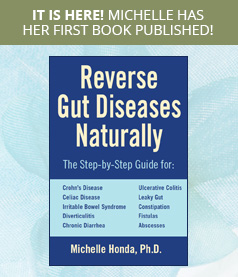

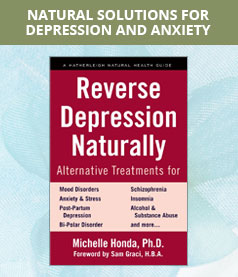
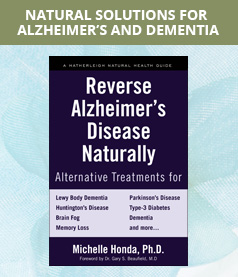
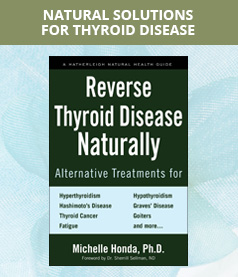

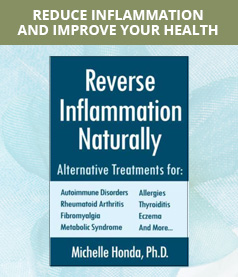
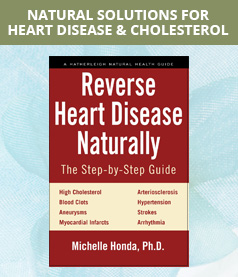
Thanks Julio
Glad you found the article helpful.
Best
Michelle